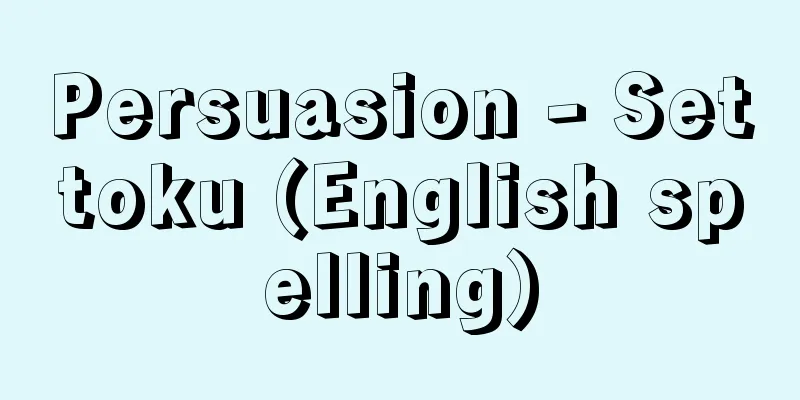Kuniomi Hirano

|
Year of death: 20th July 1864 (21st August 1864) Year of birth: March 29, 1828 (May 12, 1828) A feudal lord of the Fukuoka domain in Chikuzen during the late Edo period, and a patriot of the Sonnno Joi movement. Known as Jiro, he was the second son of Hirano Yoshiroemon, a foot soldier of the same domain. He served as the Edo residence construction officer and Nagasaki residence various affairs auditor. He had studied Japanese classics, waka poetry, and gagaku, but was influenced by Aizawa Masashisai's Shinron and also studied court etiquette, which led him to love the imperial custom of wearing eboshi hats and hitatare, and to aspire to the restoration of the monarchy. In 1858 (Ansei 5), he escaped from the domain and went to Tokyo, but avoided the storm of the Great Purge that was happening at the time and entered Satsuma, protecting Gessho. He was pursued for the crime of escaping from the domain, and went into hiding in Higo, Satsuma, and other places. In 1860 (Man'en 1), he heard the news of the Sakuradamon Incident at the home of merchant Shiraishi Masaichiro in Shimonoseki, and wrote the following poem: "The light snow of spring mixed with the sparks of the Sakurada fields, the place is interesting to call home." In 1862, when Shimazu Hisamitsu went to Kyoto, he planned to raise an army with Satsuma samurai and Kyushu volunteers such as Maki Izumi and Ogawa Kazutoshi, but this was thwarted in the Teradaya Incident. He was imprisoned for admonishing the feudal lord Kuroda Chohyou, who was on his way to visit the capital. While in prison, he wrote "Jinmu Hissatsu Ron" (The Theory of Victory of Emperor Jinmu) and other works in "small twisted characters (made by cutting small pieces of paper string and pasting them together)". He was pardoned the following year and went to Kyoto, where he began serving at Gakushuin on August 16th. The next day, he was ordered to go to Gojo in Yamato to persuade the Tenchugumi, but failed, and on August 18th, due to the political upheaval, he fled to Tajima. He attacked the Ikuno magistrate's office with Sawa Nobuyoshi, one of the Seven Nobles, but was soon defeated, captured, and imprisoned in Rokkaku Prison in Kyoto. In 1864, during the turmoil of the Kinmon Incident, he was beheaded without a trial. His last words were, "I wonder if not a single maple leaf in the garden of a storm of people will fall." <Works> "Sonjoi Eidanroku", "Peifuron", "Kaiten Sansaku" <References> "Biography and posthumous manuscripts of Hirano Kuniomi" (Mitsui Mieko) Source: Asahi Japanese Historical Biography: Asahi Shimbun Publications Inc. About Asahi Japanese Historical Biography |
|
没年:元治1.7.20(1864.8.21) 生年:文政11.3.29(1828.5.12) 幕末の筑前福岡藩士,尊攘派志士。通称次郎。同藩足軽平野吉郎右衛門の次男。江戸屋敷普請方,長崎屋敷諸用聞次定役を勤める。かねて国学,和歌,雅楽を学んでいたが,会沢正志斎の『新論』に感化を受け,また有職故実を修めたこともあって,烏帽子直垂の王朝風俗を愛好し,王政復古を志すようになる。安政5(1858)年脱藩上京するが,折からの大獄の嵐を筑後に避け,月照を保護して入薩。脱藩の罪で追われ,肥後,薩摩などに潜行。万延1(1860)年,桜田門外の変の報を下関の商人白石正一郎宅で聞き,「所から名もおもしろし桜田の火花にまじる春の淡雪」と詠んでいる。文久2(1862)年島津久光の上洛を機に,薩摩藩士および真木和泉,小河一敏ら九州有志と挙兵を企てたが,寺田屋の変で挫折。参府の途にあった藩主黒田長溥を諫止し投獄された。獄中では「小撚文字(こよりを小さく切って張り合わせたもの)」で『神武必勝論』などを著す。翌年赦免されて上京,8月16日学習院出仕となる。翌日天誅組説得の命を受けて大和五条に赴くが失敗,8月18日の政変により但馬に走る。七卿のひとり沢宣嘉を擁して生野代官所を襲撃したがほどなく潰敗し,捕らわれて京都六角の獄に収監。元治1(1864)年禁門の変の騒擾の際,未決のまま斬首された。辞世は「みよや人嵐の庭のもみぢ葉はいづれ一葉も散らずやはある」。<著作>『尊攘英断録』『培覆論』『回天三策』<参考文献>『平野国臣伝記及遺稿』 (三井美恵子) 出典 朝日日本歴史人物事典:(株)朝日新聞出版朝日日本歴史人物事典について 情報 |
>>: Piranesi - Giovanni Battista Piranesi
Recommend
Gunter School - Gyunter School
…After graduating from the Munich Higher Educatio...
Doolittle, H.
...The pen name of the American female poet Hilda...
Matsui spring water
Street performer and incense maker. This name was...
haliaia
…The word agora comes from the verb meaning to ga...
Wet and dry bulb hygrometer (English spelling)
An instrument that measures the humidity of the at...
Purusha
A Sanskrit word meaning "man," "hum...
Genus Ypsilandra
…It has the property of producing adventitious bu...
Yoshishige Satake
A military commander from the Sengoku to Azuchi-M...
Mine Nakaki - Buchuuki
The training of mountain ascetics in the mountains...
Umm Durman - Umm Durman
...A city in Khartoum Governorate, Republic of Su...
Onagaebine - Onagaebine
...Half-open bloom, warm climate species. (d) C. ...
Asayama Daily News
Year of death: Tensho 5 (1577) Year of birth: Unkn...
Compression Ridge - Ashukuone
…A small ridge, measuring a few tens of meters in...
Pleistocene - Pleistocene
〘noun〙 A division of geological time. It belongs t...
Reunion dodo (English spelling)
...Later, at the end of the 16th century, the Dut...









